63 posts
Latest Posts by heyitsmaye - Page 2
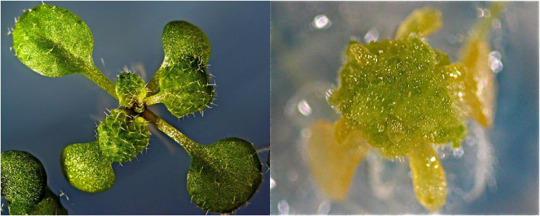


· Music shows that listening to music can reduce anxiety, blood pressure, pain
· Improves sleep quality, mood mental alertness and memory
· Johns Hopkins researchers had jazz performers and rappers improv music while lying inside an fMRI machine and studied their brains
Not specific more generic
perhaps you have been focusing too much on saving

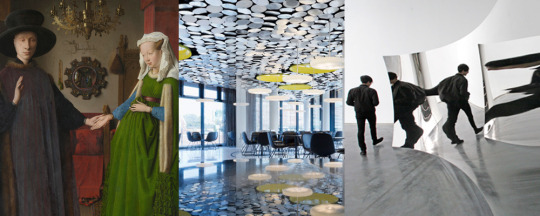
Put On A Spread - project research
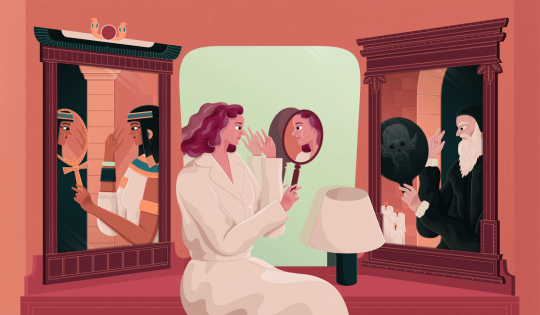
Put on a spread project research




Faking it - research
Let’s Talk About Food...in Space!
It’s Thanksgiving time…which means you’re probably thinking about food…
Ever wonder what the astronauts living and working on the International Space Station eat during their time 250 miles above the Earth? There’s no microwave, but they get by using other methods.
Here are some fun facts about astronaut food…

Astronauts are assigned their own set of silverware to use during their mission (they can keep it afterward too). Without a dishwasher in orbit, they use special wipes to sterilize their set between uses, but it’s still better for everyone if they keep track of and use their own! So many sets of silverware were ordered during the space shuttle program that crews on the space station today still use silverware engraved with the word “shuttle” on them! So #retro.

You probably know that astronauts use tortillas instead of bread to avoid crumbs floating everywhere. Rodolfo Neri Vela, a payload specialist from Mexico, who flew on the space shuttle in 1985, introduced tortillas to the space food system. Back then, we would buy fresh tortillas the day before launch to send on the 8-10 day space shuttle missions.

We then learned how to reduce the water activity when formulating tortillas, which coupled with the reduction of oxygen during packaging would prevent the growth of mold and enable them to last for longer shuttle missions. Now, we get tortillas from the military. In August 2017, acting NASA Administrator Robert Lightfoot ate a meal that included tortillas from 2015!

Our food menu is mostly all made from scratch so it can meet the requirements of the nutrition team and ensure astronauts eat enough fruits and vegetables. The space station is stocked with a standard menu that includes a mix of the more than 200 food and drink options available. This ensures lots of variety for the station crews but not too many of each individual item.

The food is packaged into bulk overwrap bags, referred to as BOBs, which are packed into cargo transfer bags for delivery to the space station. Each astronaut also gets to bring nine personalized BOBs for a mission, each containing up to 60 food and drink options so they can include more of their favorites – or choose to send a few specific items for everyone to share on a particular holiday like Thanksgiving. As a result, the crew members often share and swap their food to get more variety. Astronauts also can include any food available at the grocery store as long as it has an 18-month shelf life at room temperature and meets the microbiological requirements.

Fresh fruit and vegetables are a special treat for astronauts, so nearly every cargo resupply mission includes fresh fruit and veggies – and sometimes ice cream!

The Dragon spacecraft has freezers to bring science samples back to Earth. If there is space available on its way to orbit, the ground crew may fill the freezer with small cups of ice cream or ice cream bars.

Some food arrives freeze-dried, and the astronauts rehydrate it by inserting a specific amount of hot or ambient water from a special machine.
Other food comes ready to eat but needs to be reheated, which crew members do on a hot-plate like device. We recently also sent an oven style food warmer to station for the crew to use. And of course, some food like peanuts just get packaged for delivery and are ready to eat as soon as the package is opened!
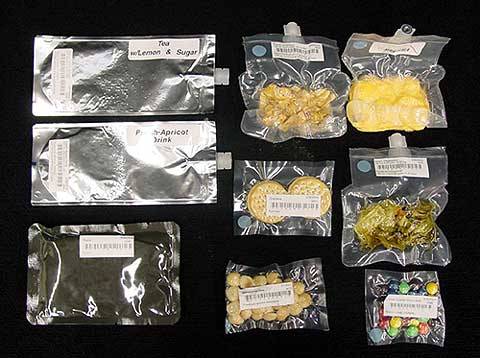
Our nutritional biochemists have discovered that astronauts who eat more fish in space lost less bone, which is one of the essential problems for astronauts to overcome during extended stays in space. In the limited area aboard the space shuttle, not all crew members loved it when their coworkers ate the (aromatic) fish dishes, but now that the space station is about the size of a six-bedroom house, that’s not really a problem.

Astronauts on station have had the opportunity to grow (and eat!) a modest amount of fresh vegetables since the first lettuce harvest in August 2015, with new crops growing now and more coming soon. Crew members have been experimenting using the Veggie growth chamber, and soon plant research will also occur in the new Advanced Plant Habitat, which is nearly self-sufficient and able to control every aspect of the plant environment!
Growing food in space will be an important component of future deep space missions, and our nutritionists are working with these experiments to ensure they also are nutritious and safe for the crew to eat.
Thanksgiving in Space

The crew on the space station will enjoy Thanksgiving together. Here’s a look at their holiday menu:
Turkey
Mashed Potatoes
Cornbread Stuffing
Candied Yams
Cran-Apple Dessert
Learn more about growing food on the space station HERE.
Make sure to follow us on Tumblr for your regular dose of space: http://nasa.tumblr.com.
How Do You Like Your Turkey? Home-Cooked or Rocket-Launched?

It’s Thanksgiving, which means that you’re probably thinking about food right now. And here at NASA, we have to think about food very seriously when we explore space!
Astronauts Need to Eat, Too!
Like for you on Earth, nutrition plays a key role in maintaining the health and optimal performance of the astronauts. The Space Food Systems team is required to meet the nutritional needs of each crew member while adhering to the requirements of limited storage space, limited preparation options, and the difficulties of eating without gravity.
Good food is necessary being comfortable on a mission a long way from home — especially for crewmembers who are on board for many months at a time. It’s important that the astronauts like the food they’re eating everyday, even given the preparation constraints!
Astronaut Food Has Not Always Been Appetizing

The early space programs were groundbreaking in a lot of ways — but not when it came to food. Like today, crumbs had to be prevented from scattering in microgravity and interfering with the instruments. Mercury astronauts had to endure bite-sized cubes, freeze-dried powders, and semi-liquids stuffed into aluminum tubes. The freeze-dried food were hard to rehydrate, squeezing the tubes was understandable unappetizing, and the food was generally considered to be, like spaceflight, a test of endurance.
However, over the years, packaging improved, which in turn enhanced food quality and choices. The Apollo astronauts were the first to have hot water, which made rehydrating foods easier and improved the food’s taste. And even the Space Shuttle astronauts had opportunities to design their own menus and choose foods commercially available on grocery store shelves.
The Wonders of Modern Space Food

Nowadays, astronauts on the International Space Station have the opportunity to sample a variety of foods and beverages prepared by the Space Food Systems team and decide which ones they prefer. They can add water to rehydratable products or eat products that are ready to eat off the shelf.
All the cooking and preparation has been done for them ahead of time because 1) they don’t have room for a kitchen to cook on the space station 2) they don’t have time to cook! The crewmembers are extremely occupied with station maintenance as well as scientific research on board, so meal times have to be streamlined as much as possible.
Instead of going grocery shopping, bulk overwrap bags (BOBs!) are packed into cargo transfer bags for delivery to the space station. Meal based packaging allows the astronauts to have entrees, side dishes, snacks, and desserts to choose from.
Taste in Space

The perception of taste changes in space. In microgravity, astronauts experience a fluid shift in their bodies, so the sensation is similar to eating with a headcold. The taste is muted so crewmembers prefer spicy foods or food with condiments to enhance the flavor.
We Can’t Buy Groceries, But We Can Grow Food!
Growing plants aboard the space station provides a unique opportunity to study how plants adapt to microgravity. Plants may serve as a food source for long term missions, so it’s critical to understand how spaceflight affects plant growth. Plus, having fresh food available in space can have a positive impact on astronauts’ moods!
Since 2002, the Lada greenhouse has been used to perform almost continuous plant growth experiments on the station. We have grown a vast variety of plants, including thale cress, swiss chard, cabbage, lettuce, and mizuna.

And in 2015, Expedition 44 members became the first American astronauts to eat plants grown in space when they munched on their harvest of Red Romaine.
Earthlings Can Eat Space Food, Too
To give you a clear idea of how diverse the selection is for astronauts on board the space station, two earthlings gave the astronaut menu a try for a full week. Besides mentioning once that hot sauce was needed, they fared pretty well! (The shrimp cocktail was a favorite.)
Space Technology for Food on Earth
Not only has our space food improved, but so has our ability measure food production on Earth. Weather that is too dry, too wet, too hot, or too cool can strongly affect a farmer’s ability to grow crops. We collaborated with the United States Agency for International Development to create a system for crop yield prediction based on satellite data: the GEOGLAM Crop Monitor for Early Warning.

This map measures the health, or “greenness” of vegetation based on how much red or near-infrared light the leaves reflect. Healthy vegetation reflects more infrared light and less visible light than stressed vegetation. As you can see from the map, a severe drought spread across southern Mexico to Panama in June to August of this year.
The Crop Monitor compiles different types of crop condition indicators — such as temperature, precipitation, and soil moisture — and shares them with 14 national and international partners to inform relief efforts.
Thanksgiving in Space
Space food has certainly come a long way from semi-liquids squeezed into aluminum tubes! This year, Expedition 57 crewmembers Commander Alexander Gerst and Flight Engineer Serena M. Auñón-Chancellor are looking forward to enjoying a Thanksgiving meal that probably sounds pretty familiar to you: turkey, stuffing, candied yams, and even spicy pound cakes!
Hungry for More?
If you can’t get enough of space food, tune into this episode of “Houston, We Have a Podcast” and explore the delicious science of astronaut mealtime with Takiyah Sirmons.
And whether you’re eating like a king or an astronaut, we wish everybody a happy and safe Thanksgiving!
Gelatin in space! Looks a bit like a tadpole when it is floating around, but I promise it was a tasty treat for us on the Space Station. The food lab prepared drink bags with gelatin mix inside, and I made gelatin for the crew. It is very tempting to play with your food when it floats.

Sunday morning~*







“I get it. It’s nice up here. You can just shut down all the systems, turn out all the lights, close your eyes, and tune out everyone. There’s nobody up here who can hurt you. It’s safe.” 侍

Biscuit Day!
Probably the most chaotic day. Didn’t have any icing so I couldn’t save my biscuits. My dinner party was basically me and my friends eating sushi and drinking bubble tea. I almost forgot to make myself, so i put together what looks like a shuttlecock 2 minutes before I put it into the oven. This biscuits tasted delicious though
Believing Is Seeing
By far, my favourite project yet. I honestly really enjoyed building the logistics of my own world and translating what it looks like in my head onto paper. Illustrating what my world felt like really helped me to visualize the atmosphere I was trying to create.
My quote was “The tawny field of burnt grass led into the tight grid of the mysterious buildings”. To me ‘tight grid’ and ‘burnt grass’ implied something sinister and restrictive, so for some reason my brain said “ah, yes this is a cult”. I researched the psychology behind a cult environment, and how emotional blackmail is used to control members. I watched interviews and ted talks about people who escaped cults, including Rose Mcgowan. After having a tutorial with Sarah, I decided to present my world in a less sinister manner, and leave it up to the audience to decided whether this was a cult or a close knit community.
When putting together the diary I enjoyed illustrating things that are not visual, for example the sound of a creaking door, or the feeling of paranoia.
I had fun writing the script for the interview because I was able to show off my research. The aim was to create a character who had just been exiled from a cult, who to her was essentially her family. Although I’m not exactly a voice actor, I tried my best to communicate the character’s vulnerability and nativity. Ryan however, did a great job as an interviewer with what he had. I literally just sent him a script and said can you record yourself saying this please.
I was frustrated with after effects. Everything was taking so long to render because my laptop isn’t really built for adobe software. My doors didn’t really come out the way I wanted but I guess it looked cool.
Improvements:
- Play around with the font and positioning of the text
- Make the script of the interview more ambiguous, cut out the end part
- somehow make the visuals of the doors match the diary so that it looks like it’s from the same world
- make something visual for the interview
All Weather
I really enjoyed using ink to block out large spaces, as it made me consider negative space in a way that I hadn’t before. For the whole project, I felt as though I was learning how to draw again, which was both a good and bad thing because I feel as though I really don’t know how to draw anymore however I’m starting to develop... something. Before when I looked at my work, I couldn’t really differentiate myself from other people but now I’m seeing hints of myself in my illustrations. On my independent day, I used my journey to and from Kingston to do some observational drawing. The day started like a complete nightmare because I foolishly left my folder of materials on the bus, but luckily I had only done a handful of small drawings. At this point I felt pretty low but I went home, collected myself, found some more paper and went out again. Overall I’m happy with my observational drawings, although I wish I had done more.
Best Thing Since Sliced Bread
I really enjoyed the researching aspect of this project, however I struggled with being strict and selective with what I wanted to communicate in the final outcome. My plan was to make an interactive book showing the properties of tape without being obvious... which then turned into an interactive roll.... which then ended up showing the ‘origin story’ of each type of tape. I feel as though I just wasn’t clear enough with what I wanted to communicate, which is reflected in my final outcome. I’m determined to develop on what I have already done and create a sufficient outcome which clearly communicates the properties of tape.
I, You, We, Us
At first, I felt pretty inadequate because I didn’t think I succeeded in creating a piece of language that I could build off, so when I got home I decided to give it another shot. After half an hour of experimenting, I came up with a poem that I was quite proud of.
My research could have been a lot better. I should’ve done more research on the process of packaging, I should have recorded my visual references, however I was mainly focusing on storyboarding my outcome and testing what it would look like.
Overall, I am very proud of my 10 second animation, seeing as I had never used the clip art studio animation software before. The people before and after me in the video, communicated really well with me. It took quite a few tries getting the positioning of the cup of water and flying box correct but we got there in the end.

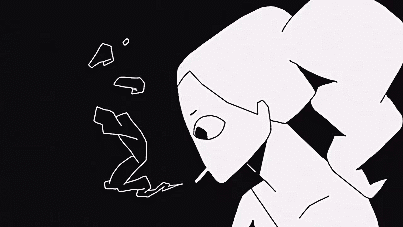
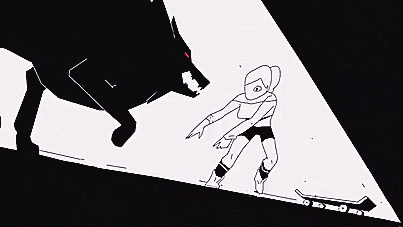







Siamés - “The Wolf”
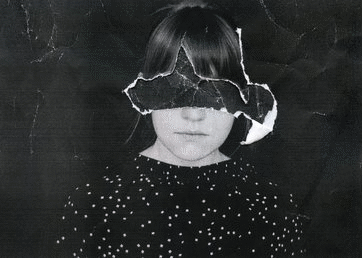
{2016} from debris, a series of(f) failure(s) (digital photos, laser prints, collage)







Fire (Pozar)
Written, directed and drawn by David Lynch

Douceur

in a world full of chaos

all these late nights
instagram | twitter | shop | commission info
